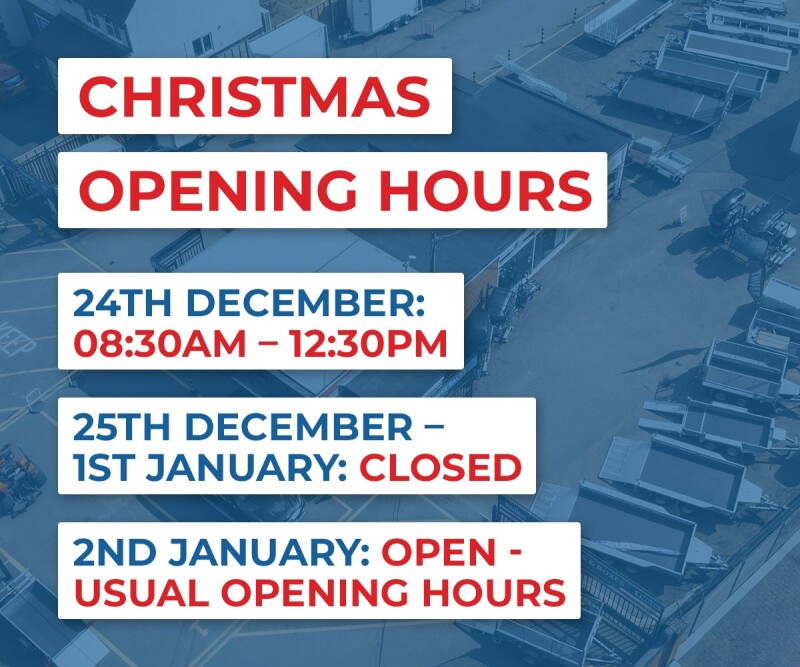How to Strap a Car or Van to a Trailer Securely (UK Guide)
Strapping a vehicle correctly protects the car, the trailer and everyone on the road. This quick UK guide shows you the safest way to secure a car or van to a trailer, with the simple checks that stop load shift and strap damage. Watch the video, then follow the step-by-step checklist below.
Watch: Secure a Vehicle to a Trailer
What you will need
- Ratchet straps with a suitable Working Load Limit (WLL) for your trailer and vehicle
- Over-tyre / wheel straps for modern alloys (capture the tyre without touching the spokes)
- Edge protectors if any strap could pass over a sharp seam or body edge
- Gloves and a clean deck – remove gravel or debris that can damage webbing
Shop ratchet straps Shop over-tyre / wheel straps
Step by step: how to strap a car to a trailer
1) Position the vehicle
- Load front first unless your trailer specifies otherwise and centre the vehicle left to right.
- Check nose weight and axle loads. The tow vehicle should sit level and steering feel normal.
- Apply the handbrake and select park or first gear.
2) Choose secure anchor points
- Use the trailer’s rated tie-down points only. Avoid light lashing eyes or side rails.
- Prefer over-tyre wheel straps that capture the tyre and avoid contact with alloy spokes.
3) Strap each wheel
- Run the strap straight and low from the wheel to the nearest anchor point. Avoid twisting the webbing.
- Use an over-tyre strap or a through-wheel route (with protection) so the wheel is captured even if pressure drops.
- Ratchet to firm. Do not over-tighten to the point of tyre deformation.
4) Create opposing angles
- Front wheels: straps pull slightly forward and outwards.
- Rear wheels: straps pull slightly backward and outwards.
- This prevents fore-aft movement under braking and acceleration.
5) Secure the free ends and recheck
- Tie off loose tails so they cannot flap or reach the road surface.
- Shake the vehicle at each corner. If you see movement, tension again.
- Stop after the first 5–10 miles and re-tension. Check again at every fuel stop.
Common mistakes to avoid
- Strapping to moving suspension arms that can settle and loosen webbing
- Running over sharp edges without edge protectors which can cut fibres
- Using worn webbing with cuts, melted fibres or damaged hooks
- Too few straps – use at least two per axle, ideally one per wheel
- No re-check after settling which is when slack most often appears
Quick safety checklist before you tow
- All straps tight, no twists, tails secured
- Wheel chocks removed, ramps fully stowed and pinned
- Breakaway cable fitted to a dedicated point, not the towball neck
- Lights tested: indicators, brakes, tails, fog and reverse if fitted
- Number plate visible and correct for the towing vehicle
Book a trailer safety check Browse straps & tie-downs
FAQs
How many straps do I need to secure a car
Use at least four – one per wheel – so each corner is restrained independently. Heavy vehicles or long journeys may warrant additional secondary straps.
Is over-tyre strapping better than through-wheel
Over-tyre straps keep tension on the tyre and avoid touching alloy spokes, so they’re ideal for modern cars. Through-wheel can work on steel wheels when protected from sharp edges.
What Working Load Limit should I look for
Add up the WLL of all straps on one side of the vehicle and ensure it exceeds the portion of the vehicle weight those straps restrain. If in doubt, choose a higher-rated strap and follow the manufacturer’s guidance.
Do I cross the straps
No. Keep runs short and straight to quality anchor points. Use opposing angles front and rear rather than long crossed spans that can slacken.
Need help choosing straps or setting up your trailer
Our team at GT Towing can advise on the correct strap type and show you the safest strapping routine in person.
Contact GT Towing Shop car transporter straps



